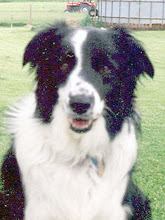When my 10-year-old nephew was bouncing around, I did what good aunts do: I sent him on a radish hunt.
“Go to the field behind the horse pasture and get two radishes,” I said.
As he darted off, I told him they were white and would be several inches long.
An adult standing around the fire muttered something about a snipe hunt.
“No,” I said. “They’re real.”
After the wheat was harvested this summer, a radish cover crop was planted. Daikon radishes, with white tap roots often a foot long, help reduce soil erosion and also break up compacted soil. They’ll die this winter and decompose, leaving a loamier soil that dries out faster in the spring.
I’ve planted Daikon radishes as a cover crop in my vegetable garden. They grew over summer, suppressing weeds. Over winter, the garden smelled like rotting cabbage as the radishes decomposed. In the spring, I didn’t have to work the soil. It was loamy and ready for planting. This is the first year, though, that they’ve been planted in our crop fields.
Minutes after racing off to the radish field, my nephew and two nieces returned to the campfire with several radishes.
They were unlike your grocery-store radishes. Instead of red orbs the size of golf balls, they were white, cylindrical roots a foot long.
“I wonder how they taste,” my brother said, picking up a broken one and biting into the crisp, white flesh. “Wow, those are pretty good.”
When the Daikon radishes were growing in my garden and in the fields, I never thought to try one. I assumed they would be woody—and either too hot or super bland. So, I picked up one and, avoiding the exterior skin, bit into the flesh. The verdict: mild flavored and pleasantly crunchy.
I’m harvesting a few more before the freezing weather sets in and the decomposition begins.
As I was looking for a ruler, Niki, the Radish Thief, hauled off the radish.
























